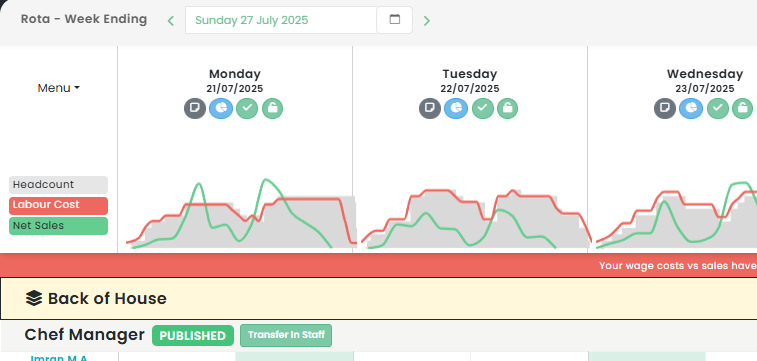National Minumum Wage increase - UK 2021
Stay informed with industry news, tips, and practical guides for hospitality professionals.
How to Offset the Cost of Minimum Wage Increases in the UK
The national living wage and minimum wages for those younger than 25 gone up from the 1st of April, which is great news for employees.
For employers, labour costs are one of the largest variable costs that businesses are having to deal with.
Although the wage increases may look small, they quickly add up. As an example, if you are paying the UK Living Wage to 30 staff all over 25 who each work three 8 hour shifts per week, your weekly wage bill will increase by £275 and your yearly bill by £14,000.
We know many of our clients pay their staff more than the national minimum wage, but with the average wage growth (pre COVID in 2018) at 3.4% (ONS link here) all businesses like yours will feel the pressure of increasing wage costs.
There is a way to offset your increased wage costs
By using Opsyte to manage your T&A (time and attendance, i.e. staff clocking in and out software) our clients tell us the average wage saving is somewhere between 4% and 10%.
With our fixed monthly pricing this means you can be confident you will be saving money by optimising your labour costs whilst paying for a great service.
Using Opsyte you and your staff can manage clock in and out data using smartphones as well as a fixed tablet.
Once clock in and out data is approved by management, the hours worked can be sent directly to your payroll processor.
Ready to simplify hospitality ops?
We’ve got you.
Speak with an Opsyte expert to see how we help:
- Save hours on staff scheduling and rota planning
- Automate invoice processing and financial insights
- Track live labour costs vs sales in real-time
- Get fast answers and support from real humans
- Automate your P&Ls

“Opsyte transformed our entire back office. Game changer.”
Read articles from our hospitality experts
-
Mastering the Art of Dining: Comprehensive Strategies to Improve Your Restaurant - From Management to Customer Service, Marketing and Beyond
How to Improve Your Restaurant: A Comprehensive GuideIn the highly competitive hospitality industry, improving your restaurant takes more than just a passion for food. It involves a careful balance of…...
-
Leveraging the QSR Industry: Understanding Fast Food Trends, Strategies, and Growth in the Hospitality Business
Understanding the QSR Industry in the UK Hospitality LandscapeThe Quick Service Restaurant (QSR) industry, commonly referred to as the fast food industry, is a significant component of the UK's hospitality…...
-
Maximising QSR Services: An Insight into Trends, Technology, and Growth Strategies in the Fast Food Industry
Embracing the Future of QSR Services in the UK: A Comprehensive AnalysisIn the ever-evolving landscape of the UK hospitality industry, Quick Service Restaurants (QSR services) have emerged as a pivotal…...
-
Unlocking the Secrets of Profitability: An In-depth Analysis of Average Restaurant Profit Margins in the Hospitality Industry
Understanding the Average Restaurant Profit Margin in the UK Hospitality IndustryThe restaurant industry forms a significant fraction of the UK's hospitality industry. As an industry that's intrinsically linked to consumer…...
-
Boosting Your Business: Innovative Bar Promotional Ideas and Marketing Strategies to Increase Sales and Traffic
10 Innovative Bar Promotional Ideas to Boost Your BusinessThe UK's hospitality industry is a vibrant and competitive space with bars and pubs at its heart. As a bar owner or…...
-
Maximising Efficiency in Hospitality: The Emerging Trends in Workforce Management, Scheduling, and Digital Transformation
Hospitality Workforce Management - Enhancing Efficiency in the UK Hospitality IndustryThe UK hospitality industry plays a significant role in the country's economy, contributing a substantial portion to the GDP. As…...
